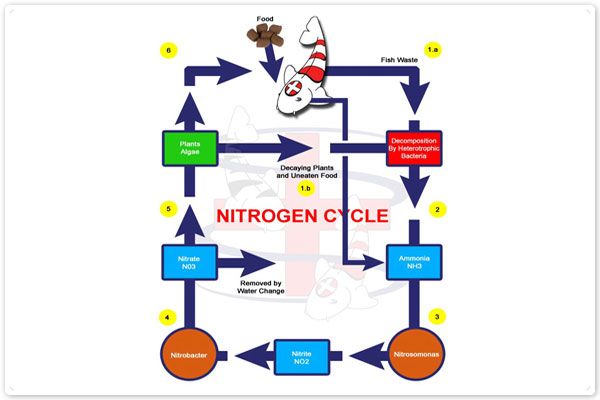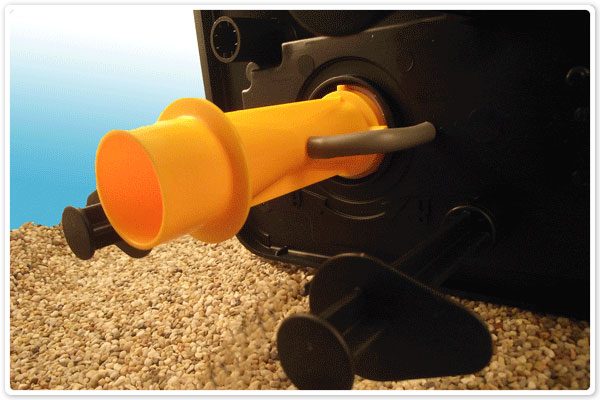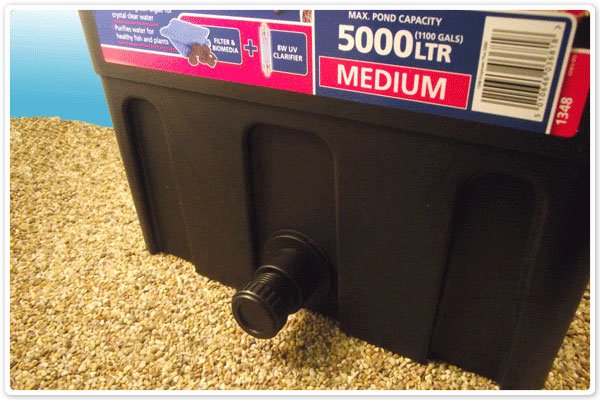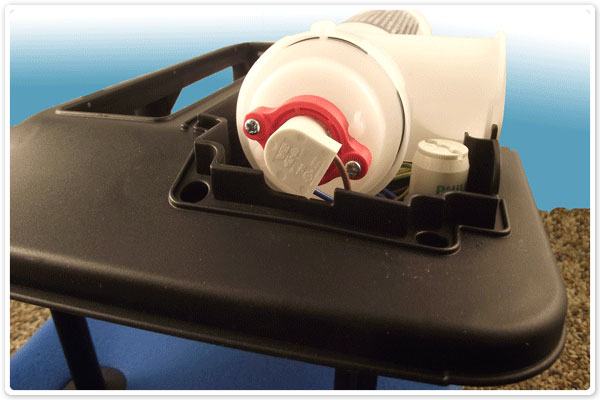Return to the Hozelock Ecopower Plus product page.
Hozelock Ecopower Plus Pond Filter Information
Hozelock are probably one of the most recognised names within the water gardening industry, they have been making products to help your pond and water garden since 1959 when they were established on an old airfield in Haddenham. The Hozelock Ecopower filters deliver clever, efficient and effective performance to make sure that your pond remains green water free and is a healthy environment for fish to thrive. These filters have been stocked at Bradshaws for over 5 years, becoming one of our most popular and best selling ranges. Ecopower+ filters are designed to filter nature ponds up to 20000 litres and goldfish ponds up to 10000 Litres with a maximum stocking level of 435cm's of fish. The Hozelock Ecopower comes in three different sizes (updated models for 2015 - see tables below for comparison) which make it suitable for a whole range of garden ponds, and when you choose to add a pump at the same time, we can help you save money!
| Model | Max Litres | Max Fish Cm | Max LPH | UVC | Hose Size |
| Ecopower 4000 | 8000 | 170cm | 2000 | 8w | 25 - 40mm |
| Ecopower 6000 | 12000 | 254cm | 3000 | 12w | 25 - 40mm |
| Ecopower 10000 | 20000 | 435cm | 5000 | 16w | 25 - 40mm |
Why is a pond filter vital to my pond?
For pond filtration to be as effective as it possibly can be, there has to be three stages to its overall filtration, consisting of a UVC; The job of a UVC is to flocculate (clump together) the tiny algae particles, these particles previously were too small to be filtered out by foams, but due to their outer cell having been damaged by exposure to the UVC they now stick together increasing their surface area dramatically. These can then be strained out by the mechanical filtration which is the next stage. Mechanical filtration is normally completed by a series of foam filter layers, but can also consist of brushes, Japanese matting and polishing pads, these are all designed so that they trap the particles sent from your filter pump - they basically polish your water so that it's nice and clear for you to be able to see your ponds' wildlife. All this trapped debris does however produce a lot of ammonia which is poisonous to fish and wildlife. Ammonia build-up would deplete oxygen levels in your pond making it impossible for wildlife to survive. Removing the ammonia is the job of biological filtration. With the help of naturally occurring friendly bacteria within the pond that turns the ammonia into nitrite, the biological media which can be flocor, bio balls, K1 etc will then turn the nitrite into nitrate, which is a food source for the plants within your pond. Without these three processes your pond will be either green or be unhealthy. The diagram below demonstrates how the nitrogen cycle in a pond works.

Hozelock Ecopower Key Features
Turbulator UVC: The first thing that you notice about the Hozelock Ecopower is the shape of the UVC unit that is fixed to the top of the filter box - the grey (black in 2015 models) ridged cylindrical shape protects the 'turbulator' UVC. The pond water which is sent from your filter pump goes straight into the UVC, here it's spun around the UV bulb. This makes sure that the water has a longer contact time with the rays from the UV bulb, which gives the UVC an even better chance of flocculating (clumping together) the algae cells. As explained earlier the algae cells previously would be so minute they would be able to pass straight through the filter media and this would mean a green pond, now they are clumped together, the foam layers can easily remove them from the pond.

Venturi: The venturi device (the venturi uses the water circulation pump's pressure to draw air via air tubing into the water) inside the Hozelock Ecopower is there to add more oxygen to your pond and also directly to the bacteria which cultivates inside your filter. With the venturi directly feeding air to the bacteria, it is going straight to the place where it is most needed. Air is crucial for bacteria to not only live - it also helps to shake off old, weak and dead bacteria as it drops into the biological chamber, which makes sure that your ponds' environment is healthy for all wildlife.

Sludge Drain: When you come to cleaning out the filter, the sludge drain becomes a very handy tool. Before using the sludge drain you need to make sure that the filter pump is switched off and isolated (by removing the fuse). Once you have isolated the filter pump you can open the blanking cap and allow all the water within the filter to drain out (if possible attach a piece of pipe to the outlet and run it to a flowerbed as pond sludge makes an excellent fertilizer). You will need to keep refilling and emptying the unit until the water starts to run clear. Once you have clear water coming out of the sludge drain, you can re-attach the blanking cap.

Foam Filter Pads: The foam layers that are inside the Hozelock Ecopower are extremely important for the filter to work and create a healthy pond environment. As previously explained above, the sole purpose of the foam layers is to trap particles sent from your filter pump, things such as algae, sludge, pollen, dust and fish waste will all be caught, to help give a glimmering shine to your pond water. The way in which the filter foams are designed, is a flat bottom and a pyramid shaped surface. The pyramid shaped side of the filter foams come into contact with the water first. This design and shape means that the foams have the maximum amount of surface area in a small amount of space. This design helps give the foams up to 50% more surface area than if they were of a flat design. From time to time it will be necessary to remove the foams from the filter and clean or replace them. To do this you will first of all need to turn off all electrical equipment in connection with the filter itself. You can then remove the lid from the filter and turn it upside down. You will notice that the foams are secured in place by the black support legs - simply slide the foams free from each individual point and then rinse them in a bucket of pond water until clean. Remember never to use a hosepipe to clean the foams as the chlorine will kill any bacteria which is inside your filter box, and all the mature friendly bacteria will have to cultivate again.
How to change the UV bulb
Changing the bulb on the Hozelock Ecopower is a simple job which shouldn't take much more than 5 minutes. First you need to fully turn off the UVC and also the filter pump. It is imperative that these two things are done first - if you look at a lit UV light it can damage your eyesight, so never do so! Once you've turned off the power you can remove the 4 phillips head screws that are holding the UVC cover in place. Put this item to one side. You will be left with what is shown in the below picture.

Make sure when taking the UV bulb out that you remove it from the side with the groove cut out in the black plastic as shown in the above picture. Start by removing the electrical end cap from both ends of the UV bulb, then slide out the UV bulb. When fitting the new UV bulb make absolutely sure that you do not touch the glass without using a cloth or gloves - as leaving any grease on the UV bulb will cause it to overheat and possibly explode once back in operation. Once you've slid the bulb into the quartz sleeve you can then re-attach both of the electrical end caps and secure the entire unit back in place.

